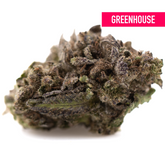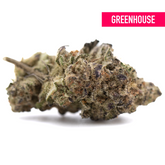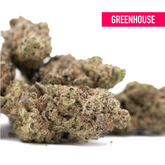THCa Cartridge Production Process: From Raw Cannabis to Finished Product

The transformation of raw cannabis plants into premium THCa cartridges represents one of the most sophisticated processes in the modern cannabis industry. This comprehensive THCa production process involves multiple precise steps, advanced technology, and strict quality control measures that ensure the final product maintains the delicate molecular structure of tetrahydrocannabinolic acid while delivering consistent potency and flavor profiles.
The cannabis to cartridge manufacturing journey typically spans 4-6 weeks from harvest to finished product, requiring specialized equipment, controlled environments, and expert oversight at every stage. Unlike traditional THC production, maintaining THCa's non-psychoactive properties throughout the entire THCa cartridge production line presents unique challenges that demand innovative solutions and meticulous attention to detail.
Understanding the complete raw cannabis processing THCa workflow helps appreciate why premium THCa cartridges command higher prices and deliver superior experiences. The complexity of preserving THCa's molecular integrity while creating a stable, vapeable product requires significant investment in technology, expertise, and quality assurance protocols that distinguish professional operations from amateur producers.
Cannabis Cultivation for THCa Production
The foundation of exceptional THCa extraction workflow begins long before plants reach the processing facility. Cannabis cultivation specifically for THCa production requires cultivators to optimize growing conditions that maximize cannabinoid acid production while minimizing premature decarboxylation that converts THCa into psychoactive THC.
Premium THCa-focused cultivation typically occurs in controlled indoor environments where temperature, humidity, and lighting can be precisely managed. Optimal growing conditions maintain temperatures between 65-75°F during vegetative growth and 60-70°F during flowering, with relative humidity levels carefully adjusted from 60-70% in early flowering to 40-50% near harvest. These parameters prevent heat stress that can trigger unwanted decarboxylation while promoting maximum trichome development.
The genetic selection plays a crucial role in cannabis cartridge production steps, with cultivators choosing strains known for high THCa production and robust terpene profiles. Popular choices include Wedding Cake, Gelato, and OG Kush phenotypes that naturally produce elevated THCa levels while maintaining desirable flavor characteristics that translate well into cartridge form.
Harvest timing represents perhaps the most critical decision in the entire from cannabis plant to THCa cartridge process. Trichomes must be harvested at peak THCa concentration, typically when they appear milky white under magnification with minimal amber coloration. Harvesting too early results in lower cannabinoid concentrations, while waiting too long allows natural decarboxylation to reduce THCa levels significantly.
Post-harvest handling requires immediate attention to prevent THCa degradation. Fresh cannabis destined for THCa extraction is often flash-frozen using liquid nitrogen or dry ice to halt enzymatic processes that could convert THCa to THC. This preservation method maintains the plant's chemical profile until it can be processed in the THCa cartridge production facility setup.
Proper curing and storage for THCa production differs substantially from traditional cannabis preparation. Rather than the extended curing periods used for smokable flower, THCa-destined material undergoes rapid moisture reduction in controlled environments with temperatures below 60°F and humidity levels maintained between 45-55%. This process removes excess water while preserving delicate cannabinoid acids and volatile terpenes essential for high-quality cartridge production.

Initial Processing and Preparation
The transition from harvested cannabis to extraction-ready material marks the beginning of the industrial THCa cartridge manufacturing process. This critical phase transforms raw plant material into optimized feedstock through precise trimming, moisture adjustment, and quality assessment procedures that directly impact final product quality and extraction efficiency.
Professional THCa processing equipment used in initial preparation includes automated trimming machines, moisture analyzers, and classification systems that ensure consistent input material for downstream processes. Trimming removes excess leaf material while preserving trichome-rich surfaces, typically reducing raw material weight by 20-30% while concentrating cannabinoid content.
Moisture content optimization represents a crucial balance in preparing cannabis for THCa extraction. Material moisture levels must be reduced to 8-12% to prevent extraction solvent contamination while avoiding over-drying that can damage delicate trichomes and reduce yield. Advanced moisture analyzers provide real-time feedback, allowing operators to achieve precise moisture targets across different plant materials and environmental conditions.
Quality grading systems employed in professional cartridge production facility operations evaluate multiple parameters including trichome density, visual appearance, aroma intensity, and preliminary cannabinoid content through rapid testing methods. This assessment determines which batches proceed to premium extraction processes and which require alternative processing methods or quality adjustments.
Size reduction and homogenization ensure consistent extraction performance across entire batches. Industrial grinders reduce particle size to optimal ranges, typically 2-4mm, which maximizes surface area exposure while preventing over-processing that could introduce unwanted plant materials into the extraction process. Homogenization systems blend materials from multiple plants to achieve consistent cannabinoid profiles throughout production runs.
Temperature control during initial processing prevents premature decarboxylation that would reduce THCa content. Processing areas maintain temperatures below 70°F with minimal heat generation from equipment operation. This controlled environment preserves the molecular integrity essential for successful complete THCa cartridge production process outcomes.
Contamination prevention protocols implemented during initial processing include mandatory personal protective equipment, sanitized work surfaces, and controlled access procedures that prevent foreign material introduction. These measures ensure that subsequent extraction processes achieve maximum purity and that final products meet stringent safety and quality standards required for premium THCa cartridges.
Extraction Phase: The Heart of THCa Production
The extraction phase represents the technological centerpiece of the THCa manufacturing timeline, where sophisticated equipment and precise process control transform prepared cannabis material into concentrated THCa extract. This critical stage requires advanced commercial cannabis extraction systems capable of selective cannabinoid isolation while preserving the delicate molecular structure that distinguishes THCa from its psychoactive counterpart.
Modern THCa cartridge production line facilities typically employ supercritical CO2 extraction systems specifically calibrated for cannabinoid acid preservation. These systems operate at carefully controlled pressures between 1,500-3,000 PSI and temperatures maintained below 90°F to prevent decarboxylation while achieving optimal extraction efficiency. The inert nature of CO2 ensures no residual solvents remain in the final product, meeting strict safety requirements for vaporizable products.
Equipment setup and calibration procedures begin each extraction cycle with comprehensive system checks including pressure vessel integrity, temperature sensor accuracy, and flow rate calibration. Extraction parameters are precisely programmed based on the specific cannabis material being processed, with typical extraction cycles lasting 4-6 hours depending on material quantity and desired concentration levels.
Monitoring and control systems provide real-time feedback throughout the extraction process, allowing operators to adjust parameters based on pressure readings, temperature fluctuations, and extract quality indicators. Advanced systems incorporate automated safety shutoffs that prevent equipment damage and ensure operator safety while maintaining optimal extraction conditions.
The extraction workflow typically involves multiple passes through the cannabis material, beginning with lower pressure and temperature settings to extract more volatile compounds, followed by higher pressure conditions to capture remaining cannabinoids. This graduated approach maximizes yield while preserving the full spectrum of beneficial compounds that contribute to the entourage effect valued in premium THCa cartridges.
Solvent recovery systems integrated into modern extraction equipment recapture and purify CO2 for reuse, reducing operational costs while maintaining environmental sustainability. These closed-loop systems achieve recovery rates exceeding 95%, making large-scale production economically viable while minimizing environmental impact.
Quality control during extraction involves continuous sampling and testing to ensure consistent potency and purity standards. Inline monitoring systems track extraction progress, allowing operators to adjust parameters in real-time and ensuring optimal yield from each batch of source material.

Post-Extraction Processing and Refinement
Following successful extraction, the crude THCa-rich material undergoes sophisticated refinement processes that transform it into cartridge-ready concentrate. This THCa extraction workflow phase employs advanced separation technologies to remove unwanted compounds while concentrating desired cannabinoids and preserving valuable terpenes that contribute to flavor and therapeutic effects.
Winterization represents the first major refinement step, where crude extract is dissolved in ethanol and subjected to sub-zero temperatures typically ranging from -20°F to -80°F. This process crystallizes and separates fats, waxes, and lipids that could negatively impact vaporization quality and cartridge performance. Professional operations utilize specialized freezers and filtration systems to achieve thorough winterization while minimizing THCa losses.
Filtration methods employed in professional THCa cartridge production facility setup operations include multiple stages designed to achieve pharmaceutical-grade purity. Initial filtration removes particulate matter using mesh filters, followed by activated carbon filtration to eliminate chlorophyll and other color compounds, and final polishing through ceramic or membrane filters that achieve micron-level purity.
Rotary evaporation systems remove residual solvents while concentrating the THCa content to desired levels. These systems operate under vacuum conditions at controlled temperatures below 100°F to prevent decarboxylation while efficiently removing ethanol and other volatile compounds. The process typically concentrates extracts to 70-90% cannabinoid content depending on intended final product specifications.
Terpene separation and reintroduction processes capture and preserve the aromatic compounds that define strain-specific characteristics. Steam distillation or molecular distillation techniques separate terpenes during early processing stages, which are then precisely reintroduced to achieve consistent flavor profiles and therapeutic benefits in the final product.
Decarboxylation control represents a critical challenge throughout post-extraction processing, as excessive heat or time can convert valuable THCa into psychoactive THC. Advanced monitoring systems track time-temperature exposure, while specialized equipment maintains precise environmental conditions that preserve THCa integrity while achieving necessary refinement objectives.
Crystallization techniques may be employed to produce THCa crystals of exceptional purity, often exceeding 95% cannabinoid content. These processes involve controlled temperature and pressure manipulation that encourages THCa molecule organization into crystal structures while excluding impurities and other compounds.
The final refined extract undergoes comprehensive laboratory analysis to verify potency, purity, and safety parameters before proceeding to cartridge filling operations. This testing ensures consistency across production batches and confirms that refined material meets specifications for premium THCa cartridge products.
Final Product Assembly and Quality Assurance
The transformation of refined THCa concentrate into finished cartridges requires sophisticated assembly processes that ensure product consistency, performance, and safety. This final phase of the industrial THCa cartridge manufacturing process combines advanced automation with rigorous quality control measures to produce premium vaporizable products that meet consumer expectations and regulatory requirements.
Cartridge hardware preparation begins with thorough inspection and cleaning of empty cartridge components including reservoirs, heating elements, mouthpieces, and threading connections. Professional cartridge production facility operations source hardware from certified suppliers who provide consistent specifications and materials testing documentation to ensure compatibility with THCa concentrates.
Automated filling systems represent the technological centerpiece of modern cartridge production lines, capable of dispensing precise volumes of THCa concentrate while maintaining sterile conditions and preventing contamination. These systems typically achieve accuracy within ±0.01ml and can process hundreds of cartridges per hour while maintaining consistent fill levels and product quality.
Pre-fill preparation involves heating THCa concentrate to optimal viscosity for dispensing, typically between 100-120°F, while carefully monitoring time and temperature exposure to prevent decarboxylation. Specialized heating systems maintain uniform temperature distribution and provide precise control over viscosity parameters that ensure smooth filling operations.
Quality assurance checkpoints implemented throughout the assembly process include weight verification, leak testing, draw resistance measurement, and visual inspection for defects or contamination. Each cartridge undergoes multiple quality checks before advancing to packaging operations, with rejected units removed from production and analyzed to identify potential process improvements.
Capping and sealing operations utilize automated systems that apply consistent torque specifications and verify proper seal integrity. These systems ensure that cartridges maintain product freshness and prevent leakage during storage and transportation while providing easy access for consumers.
Final product testing involves comprehensive analysis of filled cartridges including potency verification, residual solvent analysis, heavy metals testing, and microbiological screening. This testing confirms that finished products meet all regulatory requirements and maintain the quality standards expected of premium THCa cartridges.
Batch documentation and traceability systems record all production parameters, testing results, and quality metrics for each production run. This documentation enables rapid response to quality issues and provides the transparency required for regulatory compliance and consumer confidence.

Packaging and Distribution Excellence
The final stage of the complete THCa cartridge production process involves sophisticated packaging and distribution systems designed to preserve product integrity while ensuring safe and efficient delivery to consumers. Professional packaging operations employ specialized materials and techniques that protect THCa cartridges from environmental factors that could degrade quality or potency during storage and transportation.
Packaging materials selection focuses on components that provide maximum protection against light, oxygen, and temperature fluctuations that can negatively impact THCa stability. Child-resistant packaging designs meet regulatory requirements while providing convenient access for adult consumers, typically incorporating tamper-evident seals and clear labeling that communicates product information and safety warnings.
Environmental control during packaging operations maintains optimal conditions that prevent condensation and contamination while ensuring that cartridges remain at stable temperatures throughout the packaging process. Controlled humidity levels prevent moisture absorption that could affect product consistency and vaporization performance.
Labeling systems provide comprehensive product information including potency data, strain information, production dates, and regulatory compliance statements. Advanced printing technologies ensure label durability and readability while incorporating security features that prevent counterfeiting and unauthorized reproduction.
Storage requirements for finished THCa cartridge products include temperature-controlled environments maintained between 60-70°F with relative humidity levels below 60%. These conditions preserve product potency and prevent degradation during inventory storage periods that may extend several months before reaching consumers.
Supply chain considerations encompass temperature-controlled transportation, secure handling procedures, and inventory management systems that ensure product freshness and prevent diversion. Professional distribution networks employ GPS tracking, temperature monitoring, and chain-of-custody documentation that provides complete visibility throughout the distribution process.
Retail preparation involves final quality checks and inventory documentation that enables rapid response to quality concerns while providing retailers with the information needed to properly store and display products. This comprehensive approach ensures that consumers receive premium-quality THCa cartridges that deliver consistent performance and satisfaction.
Frequently Asked Questions
How long does the complete THCa cartridge production process take from harvest to finished product?
The entire THCa manufacturing timeline typically requires 4-6 weeks from harvest to packaged cartridges. This includes 1-2 weeks for initial processing and curing, 3-5 days for extraction, 1-2 weeks for post-extraction refinement, and 2-3 days for final assembly and packaging. Professional operations may achieve faster turnaround times through parallel processing and optimized workflows.
What makes THCa cartridge production different from regular THC cartridge manufacturing?
THCa production requires strict temperature control throughout the entire process to prevent decarboxylation that converts THCa into psychoactive THC. This necessitates specialized equipment, modified processing parameters, and enhanced monitoring systems that maintain molecular integrity while achieving necessary purification and concentration objectives.
What equipment is required for professional THCa cartridge production?
A complete THCa processing equipment setup includes CO2 extraction systems, winterization equipment, rotary evaporators, filtration systems, automated filling machines, packaging equipment, and comprehensive laboratory testing capabilities. Investment costs typically range from $500,000 to $2 million depending on production capacity and automation levels.
How is quality maintained throughout the THCa production process?
Quality control involves continuous testing and monitoring at every production stage, from raw material assessment through final product analysis. This includes potency testing, purity verification, residual solvent analysis, heavy metals screening, and microbiological testing that ensures products meet safety and quality standards expected of premium THCa cartridges.
What are the main challenges in THCa cartridge production?
Primary challenges include maintaining THCa stability throughout processing, achieving consistent potency across batches, preventing contamination, managing viscosity for optimal vaporization, and meeting stringent regulatory requirements. Professional operations address these challenges through advanced equipment, comprehensive training, and rigorous quality control procedures.
How does extraction method affect THCa cartridge quality?
Extraction methods significantly impact final product quality, with supercritical CO2 extraction generally preferred for THCa production due to its ability to operate at lower temperatures while achieving high purity levels. Solvent selection, processing parameters, and refinement techniques all influence potency, flavor, and overall product performance.
What storage conditions are required for THCa cartridges?
Optimal storage maintains temperatures between 60-70°F with humidity levels below 60% and minimal light exposure. These conditions prevent degradation and maintain product stability during storage periods. Proper storage is essential for preserving the quality characteristics that distinguish premium THCa products in the marketplace.
The sophisticated THCa cartridge production process represents the pinnacle of cannabis manufacturing technology, combining advanced extraction techniques with precise quality control measures to create premium vaporizable products. From carefully cultivated cannabis plants through complex refinement processes to finished cartridges, every step requires expertise, specialized equipment, and unwavering attention to detail that ensures consumers receive consistent, high-quality products that meet their expectations and safety requirements.











